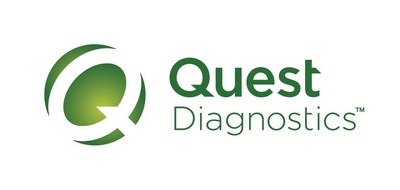Quest Diagnostics Granted FDA Breakthrough Designation for its Adeno-associated virus (AAV) Test
- None.
- None.
Insights
Analyzing...
Quest and Sarepta Therapeutics Expand Collaboration to Develop AAV Companion Diagnostics (CDx) for Sarepta's Gene Therapies
The enzyme-linked immunosorbent in vitro diagnostic assay is for the semi-quantitative detection of antibodies (IgG) to AAVrh74 capsid in human serum. The test is intended to be used in conjunction with other available clinical information as an aid to identify patients eligible for treatment with Sarepta Therapeutics, Inc.'s (NASDAQ: SRPT) ELEVIDYS (delandistrogene moxeparvovec-rokl), gene therapy for certain individuals with Duchenne muscular dystrophy.
In addition, Quest and Sarepta, the leader in precision genetic medicine for rare diseases, today announced an expanded collaboration under which Quest will develop one or more companion or complementary diagnostics in connection with Sarepta's portfolio of investigational and on-market gene therapies. The collaboration may encompass screening assays for antibodies to Sarepta's AAV-vector based gene therapies for muscular dystrophies, including Duchenne muscular dystrophy (DMD) and limb girdle muscular dystrophies (LGMD). The first companion diagnostic will be for Sarepta's first gene therapy, ELEVIDYS (delandistrogene moxeparvovec-rokl), intended to treat the underlying genetic cause of DMD, which received
"Achieving breakthrough designation for our AAVrh74 ELISA, and collaboration with AAV-gene therapy pioneer Sarepta, positions Quest at the forefront of companion diagnostics innovation in the growing field of gene therapies," said Bill Finger, General Manager, Pharma Services, Quest Diagnostics. "Our AAV testing expertise has the potential to empower many life science collaborators to develop, and ultimately bring to market, companion diagnostics for their gene therapies."
"Sarepta is pleased to expand its collaboration with Quest beyond our investigational therapies and to partner to develop essential diagnostic tools for our approved gene therapies that help streamline/match gene therapy treatment to eligible patients. Quest's diagnostic R&D capabilities and laboratory capacity play a critical role in identifying the patients who may benefit from these treatments," said Louise Rodino-Klapac, executive vice president, head of R&D and chief scientific officer, Sarepta Therapeutics.
About AAV-Based Gene Therapies
Defective genes account for approximately
Adeno-associated virus (AAV) vectors may be engineered to act as therapeutic delivery vehicles to transfer coding changes into the cell. AAV vectors are being explored for numerous therapeutic applications, and they are the most commonly used viral gene delivery system in clinical trialsi. As pre-existing antibodies to the AAV can pose a potential risk to patient safety as well as limit the therapeutic potential, patients must be screened for antibodies to determine patient eligibility.ii Testing to identify the quantity of total binding antibodies (TABs) can help identify eligible patients.iii
About Quest Diagnostics
Quest Diagnostics empowers people to take action to improve health outcomes. Derived from the world's largest database of clinical lab results, our diagnostic insights reveal new avenues to identify and treat disease, inspire healthy behaviors and improve health care management. Quest annually serves one in three adult Americans and half the physicians and hospitals in
About Sarepta Therapeutics
Sarepta is on an urgent mission: engineer precision genetic medicine for rare diseases that devastate lives and cut futures short. We hold leadership positions in Duchenne muscular dystrophy (DMD) and limb-girdle muscular dystrophies (LGMDs), and we currently have more than 40 programs in various stages of development. Our vast pipeline is driven by our multi-platform Precision Genetic Medicine Engine in gene therapy, RNA and gene editing. For more information, please visit www.sarepta.com or follow us on Twitter, LinkedIn, Instagram and Facebook.
Sarepta Forward-Looking Statements
This press release contains "forward-looking statements." Any statements contained in this press release that are not statements of historical fact may be deemed to be forward-looking statements. Words such as "believes," "anticipates," "plans," "expects," "will," "intends," "potential," "possible" and similar expressions are intended to identify forward-looking statements. These forward-looking statements include statements related to the test and the expanded collaboration between Sarepta and Quest, including the potential to develop one or more complementary diagnostics.
These forward-looking statements involve risks and uncertainties, many of which are beyond Sarepta's control. Known risk factors include, among others: the expected benefits and opportunities related to the collaboration and the companion diagnostics may not be realized or may take longer to realize than expected due to challenges and uncertainties inherent in product research and development; the results of future research may not be consistent with past positive results or may fail to meet regulatory approval requirements for safety and efficacy; any potential future inability of the parties to fulfill their commitments and obligations under the collaboration; and those risks identified under the heading "Risk Factors" in Sarepta's most recent Annual Report on Form 10-K and most recent Quarterly Report on Form 10-Q filed with the Securities and Exchange Commission (SEC) as well as other SEC filings made by Sarepta which you are encouraged to review.
Any of the foregoing risks could materially and adversely affect Sarepta's business, results of operations and the trading price of Sarepta's common stock. For a detailed description of risks and uncertainties Sarepta faces, you are encouraged to review the SEC filings made by Sarepta. We caution investors not to place considerable reliance on the forward-looking statements contained in this press release. Sarepta does not undertake any obligation to publicly update its forward-looking statements based on events or circumstances after the date hereof, except as required by law.
i AAV vectors: The Rubik's cube of human gene therapy: Molecular Therapy (cell.com)
ii Human Gene Therapy for Rare Diseases; Guidance for Industry (fda.gov)
iii Bioengineering a better adeno-associated virus vector for gene therapy (medicalxpress.com)
![]() View original content to download multimedia:https://www.prnewswire.com/news-releases/quest-diagnostics-granted-fda-breakthrough-designation-for-its-adeno-associated-virus-aav-test-301913751.html
View original content to download multimedia:https://www.prnewswire.com/news-releases/quest-diagnostics-granted-fda-breakthrough-designation-for-its-adeno-associated-virus-aav-test-301913751.html
SOURCE Quest Diagnostics








